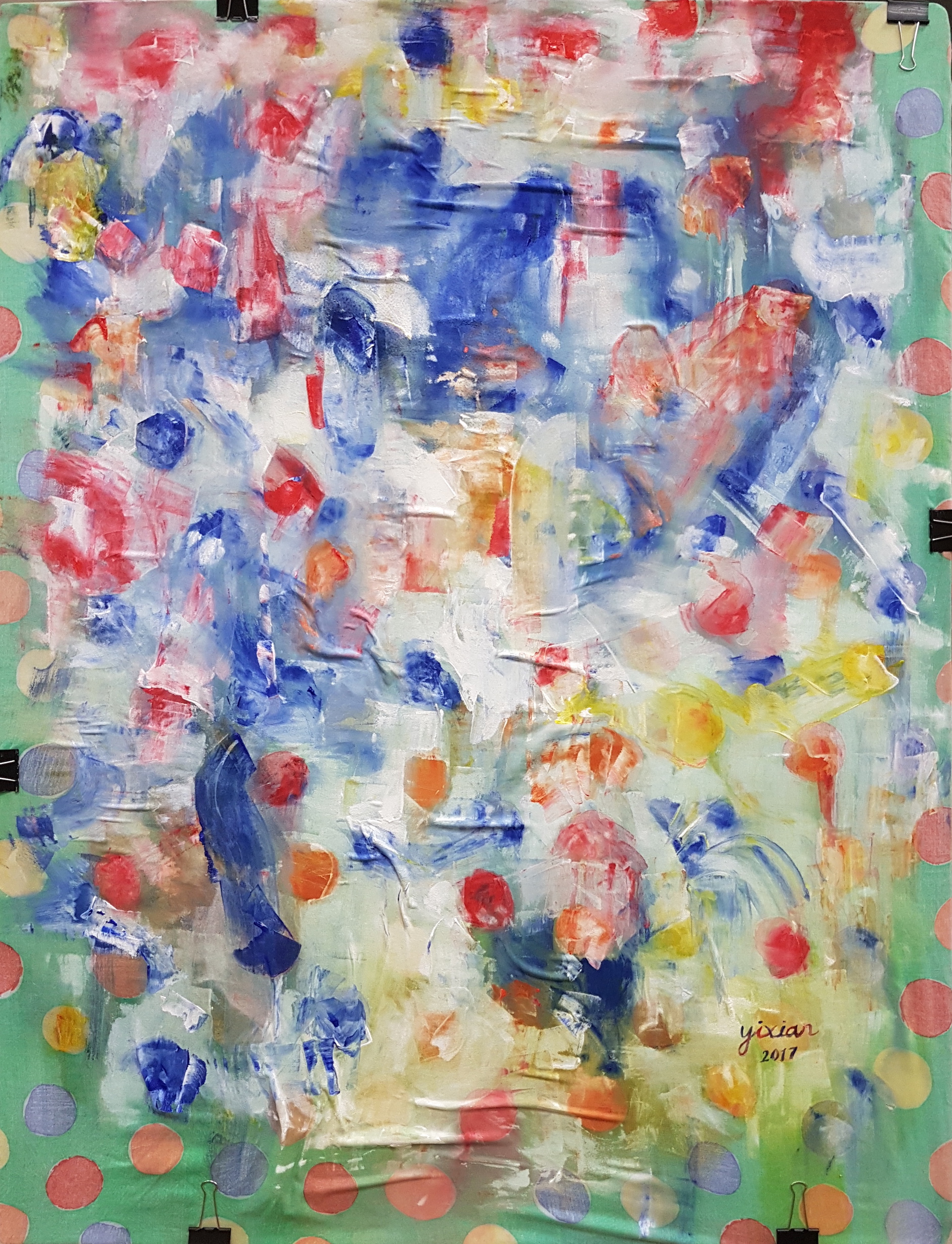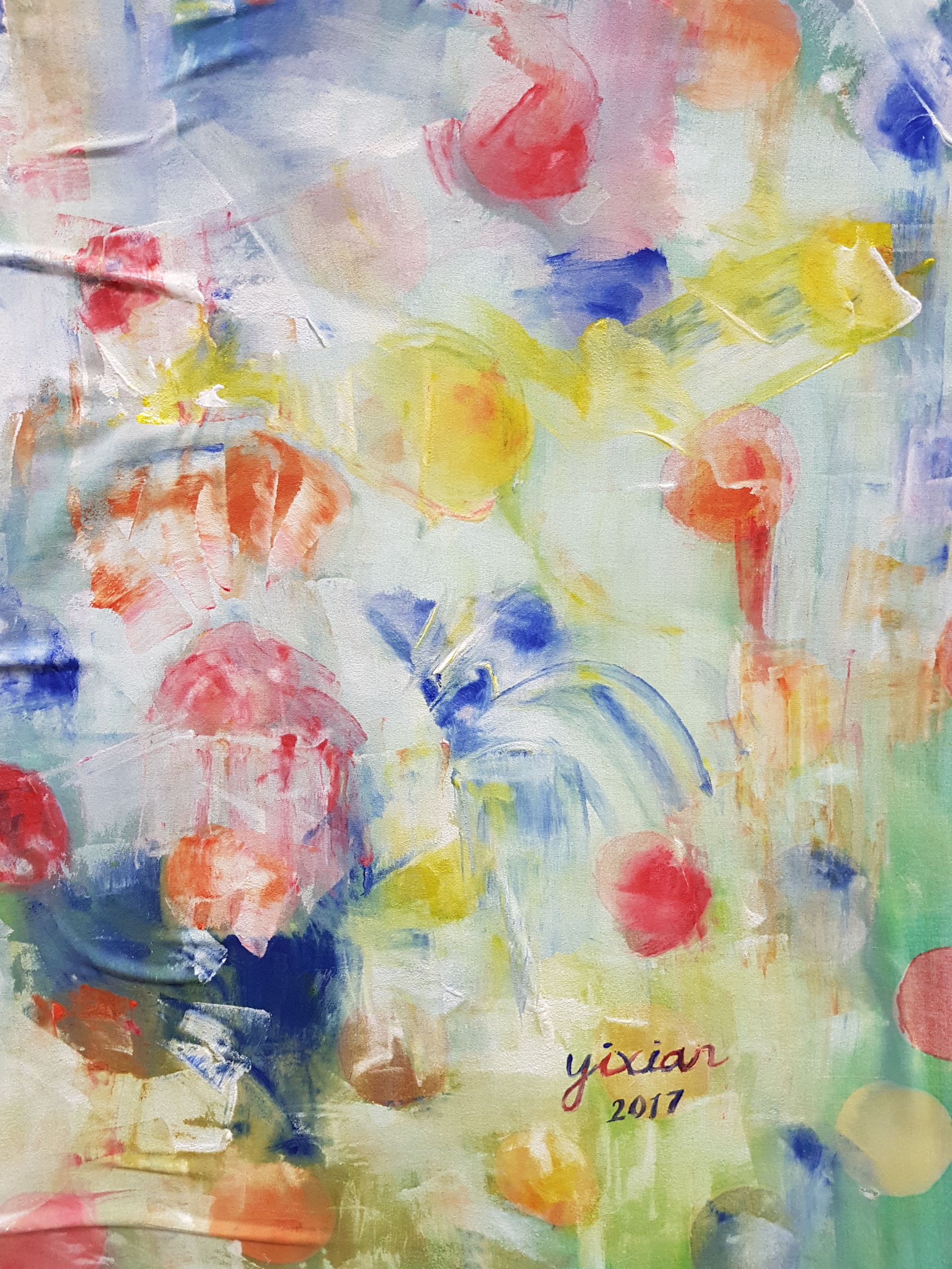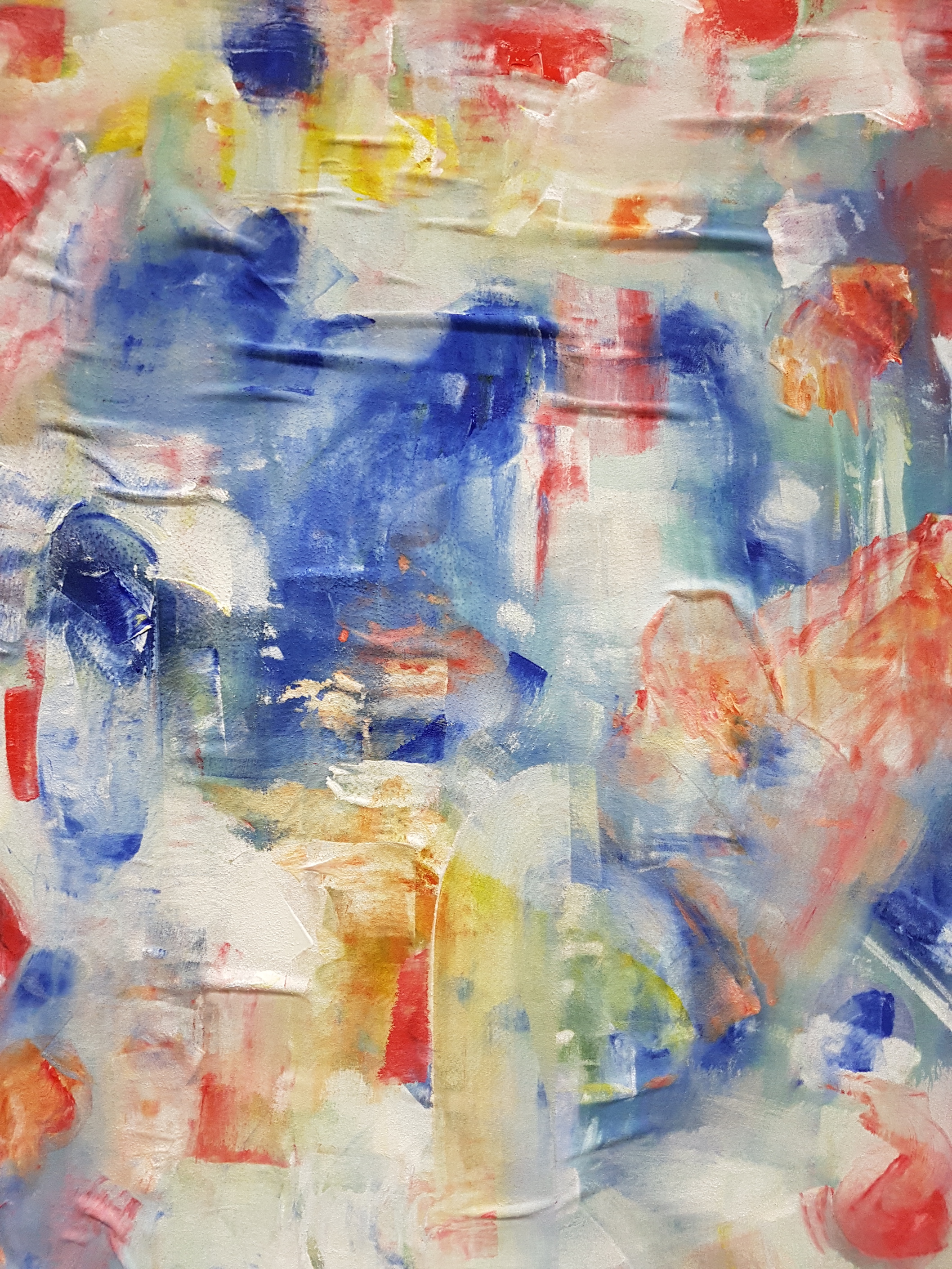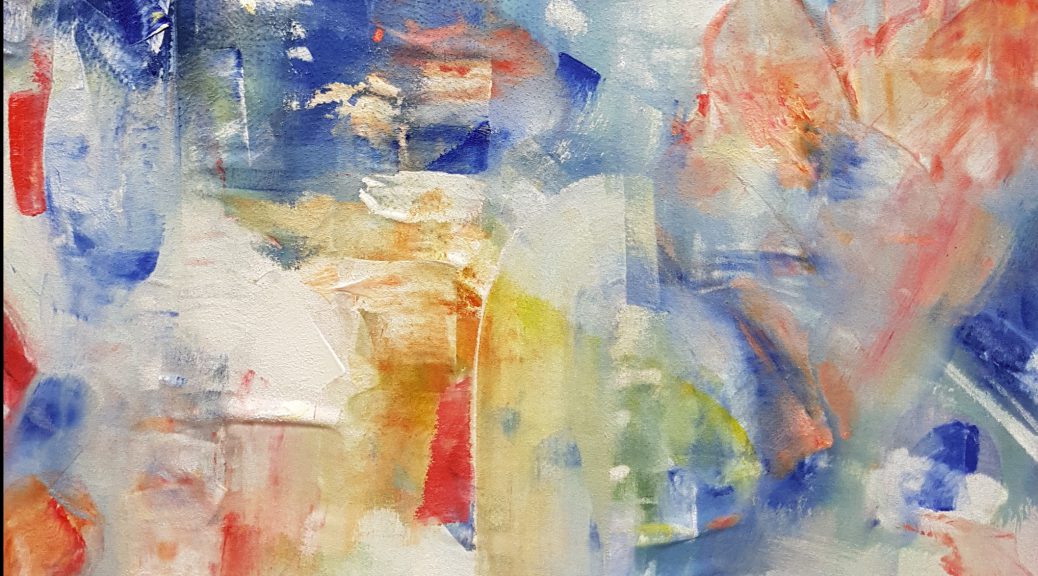


What did you feel and see while listening to the drumming?
Lying on the ground, I felt as if I was floating in a sea of sound. I was more aware of my stereo hearing, and the sounds entering each ear. The rhythmic constancy of the drumming conjured a mood of stasis and fluidity. However, the silence that accompanied the drumming prompted my mind to wander and reflect on past and future events. I saw blues and reds in motion, appearing in patches and waves.
Do you think your painting expresses something about you that you didn’t know about yourself?
This painting experience made me realise that although a large painting surface can be initially daunting, I can feel comfortable working with it, and without a pre-defined outcome.
What can you imagine about people that listen to this drumming as a way to reach another unseen side of life?
I imagine that they are very spiritual individuals who practice meditation and other calming techniques to focus or empty the mind of everyday clutter.
How did your painting change throughout the process? Or was your initial mark also the focal point of your painting in the end?
I started by painting one of the first wave motions I saw. The initial stage of the painting process was filled with hesitation and uncertainty. Some of this uneasiness subsided once I softened the green (original colour of the sheet), a colour which I did not envision while listening to the drumming. Prof Kelly also advised me to work with and not against the polka-dot pattern of my sheet, which I used to create the fluid patches of primary colours.
Did anything surprise you?
After overcoming the initial uncertainty, the automatism of creating the abstract painting felt liberating. The mind could take a backseat and be guided by our ears and eyes.






